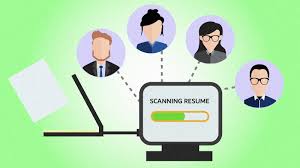Navigating Resume Scanners: What They Look For And How to Optimize Your Resume
Introduction
In the digitized world, getting your resume to stand out amidst hundreds of applications can be challenging. It’s no longer about the well-written content but how well it navigates through resume scanners. These scanners act as the preliminary sifters in the hiring process. If your resume fails at this level, it may never reach human eyes, regardless of its impeccable content. This article offers an in-depth understanding of what resume scanners look for and how to optimize your resume for scanning success.
What is Resume Scanning?
Noted in the hiring landscape as Applicant Tracking Systems (ATS), resume scanning is a path-breaking process that digitally examines resumes. This procedure is employed by employers and recruiters to streamline the otherwise daunting task of meticulously sifting through expansive volumes of resumes. By introducing electronic scanning, the initial screening and sorting of resumes are efficiently mechanized. The scoring of these resumes is driven by a set of predefined criteria that mirror the necessities of the job, thereby highlighting the most eligible candidates for recruiters. A technological wonder, the resume scanning process categorizes different facets of a candidate's resume such as skills, work experience, education, etc. Thereupon, these categorized details are analyzed to detect patterns that best align with the job specifications. Advanced systems may also account for aspects like career growth and job tenure, thus providing a comprehensive review.
How Do Resume Scanners Work?
Resume scanners, formally known as Applicant Tracking Systems (ATS), operate by categorizing sections of your resume into different buckets such as education history, work experience, skills, and more. Their mechanics involve an intricate analysis of each resume, drawing out patterns that most closely align with the job criteria supplied by recruiters.
A resume scanner's role is as intricate as it is important. They scrutinize each resume and assign them scores depending on various factors within the resume that align with what the job post defines as a great fit. Some advanced systems employed by recruiters go a step further. Not only do they look for exact keyword matches, but they also comprehend semantic matching. This enables them to identify related terms, acronyms, and even synonyms that have bearing to the job role.
Moreover, these advanced systems also track patterns such as career progression. This aspect addresses the duration of each job stint, making these scanners smart enough to establish a trajectory in a candidate's career. Therefore, these systems look beyond mere words and tap into the potential the candidate brings to their future employer. Hence, understanding their functionality can greatly aid in making your resume more appealing and eye-catching.
What are the Key Elements that Resume Scanners Search For?
Diving into the key elements that resume scanners delve for allows you to craft a resume that aligns with these expectations. Primarily, it's a quest for matching points between your profile and the job requirements specified by the employer. This matching game heavily relies on the abundance of relevant keywords that resonate with the qualifications, skills, and experiences desired in the ideal candidate.
However, the function of a resume scanner doesn't stop at identifying keywords. There's additional specific data it scavenges through in the document. This includes basic elements such as your contact information, which should be logically positioned and easily identifiable. Your work history often acts as a testament to your experience in the field. Highlight all your past work experiences, with explicit emphasis on roles closely tied to the job you're applying for.
Next in line are your skills. They often form the basis of the scanner's filtering algorithm. Thus, incorporating a well-detailed list can increase your compatibility score with the job requirements. Educational qualifications are also fundamental. Ensure they are clearly stated, as the scanner often validates these details against the job specifications.

Remarkably, resume scanners also have the capability to sense progression in your career path. The longevity of your roles and your trajectory reflect positively on your chances of being shortlisted. Thus, while jotting down professional experiences, ensure it showcases a logical and consistent career narrative. By understanding these critical aspects, you can build a powerful resume that scores high with the scanning software.
Why Do Keywords Matter in Resume Scanning?
At the foundation of resume scanning lies the pivotal role of keywords. They serve as the bridge that connects what the candidate brings to the table and the job requirements outlined by the recruiters. These keywords are the tools a scanner uses to gauge the relevance of a candidate's profile to the job posting.
Let's delve deeper into why keywords are vital in resume scanning:
Pro: Precise Representation of Skills and Experience
Well-chosen keywords can accurately depict a candidate’s skills, qualifications, and experiences aligning with the job requirements. These keywords are instrumental in ensuring your resume resonates with the job description, thus enhancing the likelihood of being shortlisted.
Con: Overuse Leads to Keyword Stuffing
A word of caution though, leverage keywords appropriately. Overdoing it or keyword stuffing can lead to a detrimental effect, causing the resume to appear as spam to scanners.
Pro: Improve Scannability
Smartly distributed keywords throughout your resume can enhance its scannability. The scanners, upon identifying these relevant words, may rank your resume higher, thus increasing the probability of it being reviewed by a recruiter.
Con: Incorrect Usage can Lead to Disqualification
One must pay attention to the correct usage of keywords. Misinterpretation or misuse can potentially downgrade or disqualify the resume from the pool of applicants.
In the race of making resumes scanner-friendly, incorporating the right keywords plays a huge role. Effectively using keywords in your resume can vastly influence scanners, making your resume stand out among the vast pool of applicants. However, one must aim for a balanced and strategic keyword optimization to navigate the thin line between keyword-stuffing and enhancing relevance.
How Can You Format Your Resume for Scanning Success?
Successfully formatting your resume for scanners begins with emphasizing simplicity, ease-of-read, and consistency. If you're pondering on how to accomplish this, here are the key strategies to remember.
To begin with, refrain from adorning your resume with unusual or fancy fonts and layouts. While these may appear attractive to the human eye, scanners may struggle to interpret them correctly. For optimal scanning results, stick to standard and universally recognized font styles like Arial, Calibri, or Times New Roman. These font styles are not only easy for scanners to process but also provide a professional and neat layout to your resume.
Keeping the information presentable and scanner-friendly is the next step. Avoid including graphics or complicated designs as scanners could fail to recognize these, leading to potential misinterpretation of data. Wherever possible, transform your skills, credentials, and achievements into bullet points or lists. These formats help scanners to identify and categorize information effortlessly.
Consistency is another highly crucial formatting facet. Make sure you stay consistent with the format for elements such as dates, titles, among others. Inconsistent data can confuse the scanners, reducing the chances of your resume getting shortlisted.
Furthermore, structuring your resume correctly is vital. Ensure to incorporate fundamental sections like contact information, professional summary, work history, educational details, and skills. A well-structured resume helps scanners to correctly categorize your credentials, thereby improving the chances of your resume ranking higher.
Lastly, make sure you strategically place the correct keywords relevant to the job description throughout your resume. This tactic further optimizes your document and increases its visibility to resume scanners.
Following these guidelines can enhance the scannability of your resume, ensuring it navigates resume scanners successfully and stands out amongst other applications.
Conclusion
Understanding how resume scanners work and what they look for can significantly increase your chances of getting your resume noticed. A well-optimized resume that strategically uses keywords and effective formatting is likely to score high with these scanners, getting you a step closer to landing that job interview.
Related FAQs about what do resume scanners look for
What are some common mistakes that affect resume scanning?
Common mistakes include overuse or stuffing of keywords, incorrect usage of industry jargon, and lack of relevant keywords. Additionally, using complicated layouts, graphics, and fancy fonts that scanners cannot interpret can negatively affect resume scanning. Lastly, inconsistent data, incorrect structuring, and failing to include crucial sections can lead to poor scanning results.

How important is layout design for resume scanners?
Layout design is crucial for resume scanners. Complex designs, usage of graphics, and unusual layouts can be hard for scanners to interpret. A well-structured, neatly organized layout with clearly defined sections aids in efficient scanning. Bullet points, lists, and standard, easy-to-read fonts improve scannability.
Can font choices impact the recognition of a resume by scanners?
Yes, font choices greatly impact recognition by resume scanners. Standard, universally recognized fonts like Arial, Times New Roman, and Calibri are easily processed by scanners. Fancy, unusual, or decorative fonts can be difficult for scanners to interpret, potentially causing crucial information to be missed.


